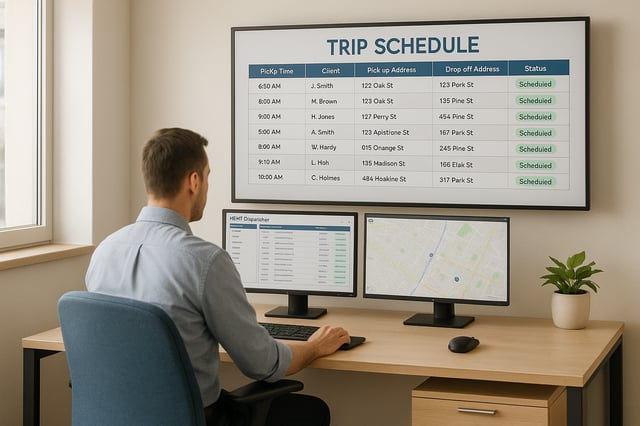

NEMT Entrepreneur provides expert insights, strategies, and resources to help non-emergency medical transportation professionals grow their businesses. Get industry-leading advice to succeed in NEMT.
Featured articles
Optimize Your Non-Emergency Medical Transport with Our Route Calculator
Running a non-emergency medical transportation (NEMT) business comes with unique challenges. From ensuring timely patient pickups to managing fuel costs, every detail matters. That’s where a smart route planning tool can make a world of difference. Our NEMT Route Optimization Calculator is designed specifically for providers who need to balance tight schedules, vehicle limits, and multiple stops in a single day.
Why Route Efficiency Matters in Medical Transport
When you’re transporting patients to appointments, dialysis, or therapy sessions, delays aren’t just inconvenient—they can impact someone’s health. Planning the most efficient path between locations cuts down on travel time and keeps your operation running like clockwork. Plus, it helps reduce wear on vehicles and saves money on gas, which adds up fast for small businesses. With our tool, you input key details like time windows and capacity, and it delivers a clear, step-by-step plan tailored to your needs.
A Tool Built for NEMT Providers
Whether you’re a solo operator or managing a fleet, optimizing patient transport routes doesn’t have to be a headache. Give our free calculator a try and see how much smoother your day can be.
FAQs
How does the NEMT Route Optimization Calculator handle time windows?
Our tool prioritizes the time windows you set for each stop, like a patient pickup between 8:00 AM and 8:30 AM. It calculates the route to ensure you arrive within those windows whenever possible. If a constraint can’t be met due to travel time or other stops, it’ll flag the issue and suggest adjustments, so you’re never left guessing.
What if my vehicle capacity is exceeded on a route?
We’ve got you covered. When you input the number of passengers or wheelchairs your vehicle can handle, the calculator checks against the stops on your route. If capacity is exceeded, it’ll alert you with a message to split the route or adjust stops, helping you avoid overloading and keep operations smooth.
Can I use this tool without a mapping API for distances?
Absolutely! While a mapping API can auto-calculate distances, our tool also lets you manually input estimated travel times between stops. This way, you can still optimize routes based on your own knowledge of local roads or typical traffic patterns. It’s flexible for whatever setup works best for you.


